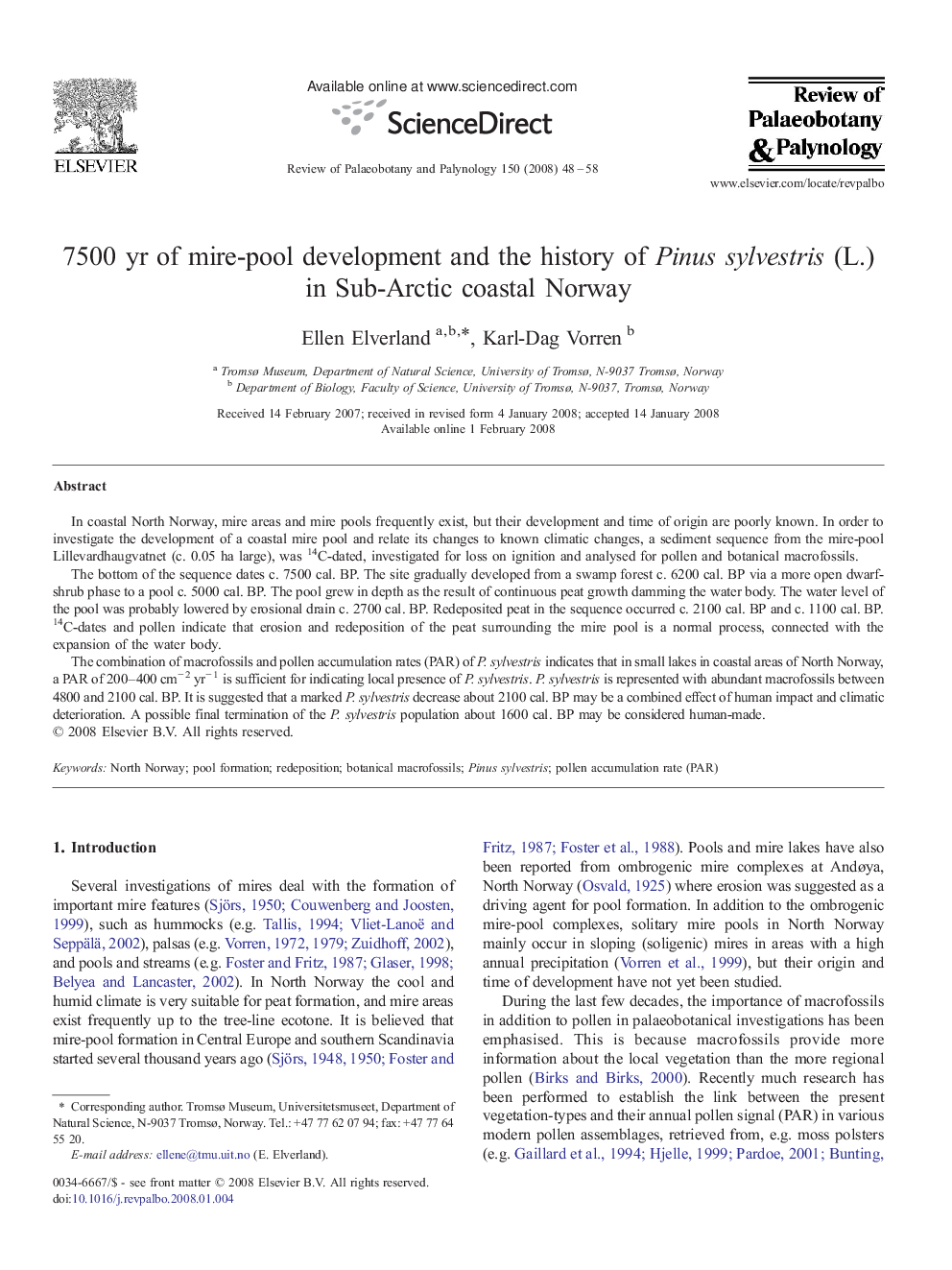| Article ID | Journal | Published Year | Pages | File Type |
|---|---|---|---|---|
| 4750954 | Review of Palaeobotany and Palynology | 2008 | 11 Pages |
In coastal North Norway, mire areas and mire pools frequently exist, but their development and time of origin are poorly known. In order to investigate the development of a coastal mire pool and relate its changes to known climatic changes, a sediment sequence from the mire-pool Lillevardhaugvatnet (c. 0.05 ha large), was 14C-dated, investigated for loss on ignition and analysed for pollen and botanical macrofossils.The bottom of the sequence dates c. 7500 cal. BP. The site gradually developed from a swamp forest c. 6200 cal. BP via a more open dwarf-shrub phase to a pool c. 5000 cal. BP. The pool grew in depth as the result of continuous peat growth damming the water body. The water level of the pool was probably lowered by erosional drain c. 2700 cal. BP. Redeposited peat in the sequence occurred c. 2100 cal. BP and c. 1100 cal. BP. 14C-dates and pollen indicate that erosion and redeposition of the peat surrounding the mire pool is a normal process, connected with the expansion of the water body.The combination of macrofossils and pollen accumulation rates (PAR) of P. sylvestris indicates that in small lakes in coastal areas of North Norway, a PAR of 200–400 cm− 2 yr− 1 is sufficient for indicating local presence of P. sylvestris. P. sylvestris is represented with abundant macrofossils between 4800 and 2100 cal. BP. It is suggested that a marked P. sylvestris decrease about 2100 cal. BP may be a combined effect of human impact and climatic deterioration. A possible final termination of the P. sylvestris population about 1600 cal. BP may be considered human-made.
